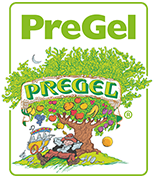
Everyone needs a little sweetness in their day, and while sugar is a very basic and familiar ingredient to most of us, a lot goes into that scoop you put in your coffee each morning. Sugar is an integral component of any bakery, pastry or frozen dessert product, as its molecular structure and chemical properties help achieve a desired texture, flavor and appearance of finished goods.
Granulated sugar is the result of the milling and refining of sugar cane or sugar beet plants. Sugar cane is a type of tall perennial grass that is grown in tropical and subtropical climates.1 While Brazil and India lead in global production of sugar cane, in the U.S. it is abundantly cultivated in Florida, Louisiana, Texas and Hawaii. Sugar beets, on the other hand, are a sturdy crop that can be cultivated in a wide variety of temperate climates. The most common growing regions in the U.S. extend from the Central and Upper Great Plains to Northwestern areas.2 While the milling of cane and beet sugars differs in some ways, the process of refining the extracted juices produces an identical final product – granulated white sugar.
 All sugars are carbohydrates, composed of carbon, hydrogen and oxygen molecules. Monosaccharides (single-sugar molecules), such as glucose, dextrose and fructose, combine to form disaccharides (two-sugar molecules) such as lactose, maltose and, most commonly, sucrose (the technical name for our common granulated sugar). Sucrose is a disaccharide composed of a glucose molecule combined with a fructose molecule (See Diagram 1).3, 4The sweetness levels of sugars differ, with lactose being low on the spectrum and fructose the highest.
All sugars are carbohydrates, composed of carbon, hydrogen and oxygen molecules. Monosaccharides (single-sugar molecules), such as glucose, dextrose and fructose, combine to form disaccharides (two-sugar molecules) such as lactose, maltose and, most commonly, sucrose (the technical name for our common granulated sugar). Sucrose is a disaccharide composed of a glucose molecule combined with a fructose molecule (See Diagram 1).3, 4The sweetness levels of sugars differ, with lactose being low on the spectrum and fructose the highest.
Understanding why and how to use sugar is very important for producing finished products. Sugar acts as a sweetener, tenderizer, and moistener in baked goods, while its hygroscopic nature (the ability to attract and maintain moisture) lowers the freezing point in frozen desserts by interfering with ice crystal formation. Basically speaking, a balanced gelato or sorbetto will be too hard and icy without enough sugar, while it will appear shiny and runny when too much sugar has been used.
There are an incredible number of sugar types, variations, syrups and substitutes that may be utilized in food products. Be very careful to ensure that you understand the properties of these ingredients prior to using them, especially if as a substitution for dry sucrose. Table 1 provides some basic information on various types of sugar, sugar derivatives and sugar substitutes. Choose the ingredients that are right for you and your products, bearing in mind the desires of your customers.
While sugar-free products gained popularity over the last few decades and are still appealing to some, a recent trend back towards natural foods has presented a new dynamic. Beginning in the 1980s, sweeteners such as high fructose corn syrup gained much popularity, at the expense of sugar. Recently, however, consumers are seeking a more natural, less processed lifestyle – rendering sugar the more desirable option. A recent article in The New York Times cites that “Sugar, the nutritional pariah that dentists and dietitians have long reviled, is enjoying a second act, dressed up as a natural, healthful ingredient.” 7
But what are the health benefits of this seemingly indulgent food? The glucose component of sugar goes directly into the blood stream, increasing insulin levels and causing a quick source of needed energy.8 For active individuals this can be especially helpful, as muscle tissues instantly utilize the energy, minimizing any build up in the body. When consumed in moderate amounts, sugar is a natural component of any balanced diet.
References:
1, 2 “Sugar and Sweeteners Background,” USDA Economic Research Service, ers.usda.gov/Briefing/sugar/background.htm”ers.usda.gov.
3 “How Sugar Is Made – An Introduction,” sucrose.com.
4 “Sucrose,” Glossary, The Chemical Heritage Foundation, chemheritage.org/EducationalServices/FACES/glossary/sucrose.htm.
5 “Everything You Need to Know About Sucralose,” International Food Information Council, ific.org/publications/brochures/sucralosebroch.cfm”ific.org, June 2004.
6 “What is Aspartame?” FAQs, Aspartame Information Center, aspartame.org/aspartame_faq.html.
7 Severson, Kim. “Sugar Is Back on Food Labels, This Time as a Selling Point,” The New York Times, March 20, 2009.
8 Clark, Shannon. “Health Benefits of Sugar,” askmen.com.
Sources: “Sugars,” everydiet.org.
